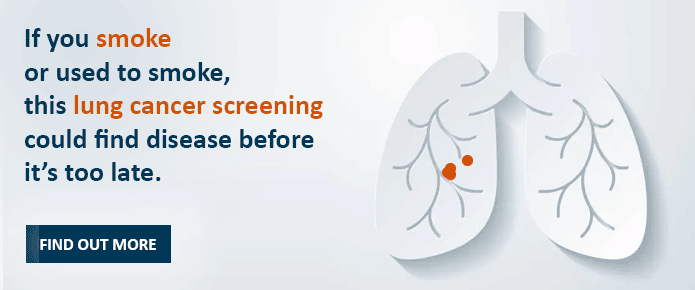The Bureau of Public Water Supply was required by the EPA to begin implementing the Ground Water Rule on December 1, 2009.
Mississippi's Implementation Procedures
The purpose of the rule is to reduce disease incidence associated with disease-causing microorganisms in drinking water. The rule established a risk-based approach to target ground water systems that are vulnerable to fecal contamination. Ground water systems that are identified as being at risk of fecal contamination must take corrective action to reduce potential illness from exposure to microbial pathogens. The rule applies to all systems that use ground water as a source of drinking water, including all community systems and non-community systems, wholesale and consecutive systems. It was published in the Federal Register on November 8, 2006, and was effective as of December 1, 2009. Mississippi has completed its Primacy Package to EPA, and it has been approved and finalized.
Beginning December 1, 2009, all groundwater systems began either Source Water Monitoring or 4-Log Compliance Monitoring. Additionally, Mississippi is required to conduct routine sanitary surveys of all public water systems and identify significant deficiencies. The Rule also requires systems to take corrective actions for significant deficiencies and for source water fecal contamination.
Source Water Monitoring
Source Water Monitoring refers to monitoring raw water, prior to chlorination, for bacteriological analysis. There are two categories of Source Water Monitoring:
- Triggered Monitoring: Systems that have a total coliform-positive routine sample under Total Coliform Rule (TCR) sampling in the distribution system are "triggered" to take raw water samples from the wells within 24 hours.
- Assessment Monitoring: Systems with wells that are classified as either "Moderate" and are less than 500 ft. deep or "High", (according to the Source Water Assessment ranking established by the Mississippi Department of Environmental Quality) will be required to take one sample per month at those wells for 12 months upon notification from the Bureau.
Triggered Monitoring
Systems that are not providing 4-log compliance monitoring, regardless of the susceptibility ranking of their wells, will be subject to triggered monitoring beginning December 1, 2009.
Triggered monitoring means that positive distribution samples "trigger" the requirement to monitor the well/wells. The number of well samples that must be taken depends on the number of positive distribution results that are obtained.
- If a system gets one positive sample on the distribution, then within 24 hours of notification, they must collect one sample at each well in service.
- If the system gets two positive samples, then within 24 hours of notification, they must collect two samples at each well in service.
- If a system gets ten TC positive samples, and the system has 6 wells in service, then within 24 hours of notification, they must collect ten samples at each of their 6 wells, for a total of 60 samples. In this situation, MSDH may mandate that the system begin 4-log compliance monitoring.
- Triggered SW SamplingWhat to do following a TCR positive distribution sample
- Sample Card InstructionsHow to fill out a sample card (Form 425)
Assessment Monitoring
Systems with wells that have SWAP rankings of either "Moderate" and are less than 500 ft., or "High" risk will have to monitor those wells once per month for 12 months. Systems will be notified by the Bureau that they must begin Assessment Monitoring.
4-Log Compliance Monitoring
Compliance Monitoring refers to free chlorine residual monitoring at or before the first customer, either daily or continuously (depending on population), and keeping a record of the results on Monthly Operating Reports. Compliance monitoring requirements are based on population:
- Systems with population less than or equal to 3,300: monitor and record the free chlorine residual at least once per day near each entry point with the well in service.
- Systems with population greater than 3,300: continuously monitor free chlorine residual and record the lowest daily chlorine reading each day that the well was in service.
Monthly Operating Reports
The MSDH Regional Engineer will review monthly operating reports each year during the annual inspection.
- Monthly Operating Report (Population less than or equal to 3,300) [Excel], [PDF]
- Monthly Operating Report (Population over 3,300) [Excel], [PDF]
Any time that the chlorine drops below the required minimum, then the operator must correct the problem within 4 hours of pump run time. Failure to maintain the minimum residual for more than 4 hours results in a Treatment Technique violation requiring a public notice within 30 days. If the system has a continuous monitor, and the monitor malfunctions, the system must take manual grab samples every 4 hours until the problem is fixed, and must repair or replace the monitor within 14 days. Failure to monitor according to the Rule represents a Monitoring violation requiring a public notice within 30 days.
Sanitary Surveys and Significant Deficiencies
A sanitary survey is a comprehensive review of eight critical elements of a water system and the identification of significant deficiencies. States are required to complete sanitary surveys on all community water systems within the first three years of the effective date of the Rule, and all non-community systems within the first five years.
Significant deficiencies must be corrected within 120 days of notification, or the system must be in compliance with a State-approved plan of correction within 120 days. Failure to correct significant deficiencies or comply with a plan within the appropriate time frame results in a Treatment Technique violation.
- Community and Non-Transient, Non-Community Significant Deficiency List
- Transient, Non-Community Significant Deficiency List
Violations
Violations of the Ground Water Rule are categorized by severity, and consist of Tier I and Tier II violations. Tier I violations result from an E.coli positive well sample, and require a public notification within 24 hours of notification. Tier II violations consist of monitoring and treatment technique violations, and require a public notification within 30 days of notification.
- Ground Water Rule ViolationsA more detailed list of Ground Water Rule violations
- EPA Ground Water web siteMore information such as the published rule, fact sheets, and federal guidance

